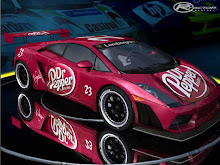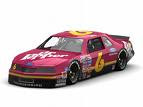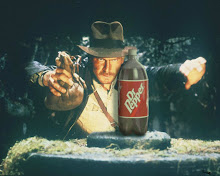 Question:
Question:
What happens when an oil tanker spills oil into the ocean?
Answer:
The oil floats on top of the water, causing environmental damage and killing fish and seabirds. Oil floats on water because it's less dense.
Oil and water don’t mix.
What you need:
four clear glasses, each half full of water
cooking oil
food colouring – red or blue show up best
liquid detergent
What to do:
Add a few drops of food colour to the first glass and stir. Notice how well the colour mixes with the water.
Pour some cooking oil into the second glass. Does it mix in like the food colour did? Try stirring the oil and observe what happens. The oil will eventually rise to form a layer on top of the water.
Pour enough cooking oil into the third glass to form a layer on top of the water approximately five centimetres thick. When the oil layer has settled, add a few drops of food colour. Don’t stir. Watch how each drop behaves as it hits the oil layer.
Now mix everything in together. What happens to the drops of colour? Some tiny drops of colour will probably stay in the oil layer. Watch what happens to them after a while.
Create the same oil and water mixture in the fourth glass, with several drops of food colour. Add a teaspoon of dishwashing detergent and stir vigorously. What is different this time? Notice the colour of the oil layer. Is it the same as the water layer?
What's happening:
Even when you stir them together, they will soon separate. The oil, which is lighter (or less dense), rises to the top. Food colouring is water-based, so it mixes easily with water, but can’t mix with the oil. Did you notice how the drops of food colour behaved when they travelled through the oil? Sometimes the food colour forms perfect little beads, which slowly drop through the oil layer.
Tuesday, June 24, 2008
Do oil and water mix?
Posted by
Leslie
at
7:43 PM
0
comments
![]()
Labels: oil and water, science experiment
Slime - make mine lime
 You can make your own cornflour slime to learn about fluids and viscosity.
You can make your own cornflour slime to learn about fluids and viscosity.
To do this experiment you will need:
cornflour
food colouring
a small mixing bowl
water
What to do:
Pour some cornflour into a mixing bowl.
Stir in small amounts of water until the cornflour has become a very thick paste.
To make the slime the colour of your choice, thoroughly stir about five drops of food colouring into the mixture.
Stir your slime REALLY slowly. This shouldn't be hard to do.
Stir your slime REALLY fast. This should be almost impossible.
Now punch your slime REALLY hard and fast. It should feel like you're punching a solid.
Stir in small amounts of water until the cornflour has become a very thick paste.
To make the slime the colour of your choice, thoroughly stir about five drops of food colouring into the mixture.
Stir your slime REALLY slowly. This shouldn't be hard to do.
Stir your slime REALLY fast. This should be almost impossible.
Now punch your slime REALLY hard and fast. It should feel like you're punching a solid.
Anything that flows is called a fluid. This means that both gases and liquids are fluids.
Fluids like water which flow easily are said to have low viscosity, whereas fluids like cold honey which do not flow so easily are said to have a high viscosity.
Cornflour slime is a special type of fluid that doesn't follow the usual rules of fluid behaviour. When a pressure is applied to slime, its viscosity increases and the cornflour slime becomes thicker.
At a certain point, slime actually seems to lose its flow and behave like a solid. Cornflour slime is an example of a sheer-thickening fluid.
Make two columns in a book and call one "Low Viscosity" and the other "High Viscosity". Which column do these liquids go into:
honey, molasses, water, Dr Pepper, whipped cream, jam, ketchup, milk, yoghurt, juice, tea.
Posted by
Leslie
at
7:33 PM
1 comments
![]()
Labels: science experiment, slime
Invisible Ink - can you see it?
Some inks are developed by heat.
Some of these oxidize when heated, and usually turn brown. For this type of 'heat fixed' ink, any acidic type of fluid will work. As a rule of thumb, the most secure way to use any particular ink is by diluting it - usually with water - near to the point when it begins to get difficult to develop.

Cola drink (diluted)
Honey (diluted)
Lemon, apple or orange juice
Milk
Onion juice
Soap water
Sugar solution
Vinegar
Ah ha! I am about to use invisible ink to write you a message:
Did you read it? First one to tell me the correct answer wins a prize!
Posted by
Leslie
at
6:52 PM
1 comments
![]()
Labels: invisible ink, science experiment
Keep a Pet Journal
You might like to work in pairs or teams.
How are you going to format this? Will you blog it? Will it be in poster form? Use a class work book? If so, which one?
Is your pet real or just on your wish list?
Keep it up every day for a week from Monday through to Friday, then we can spend a week finalising the presentation, then we can do a class sharing session.
Your assessment will be based on your teamwork and cooperation, your illustrations, your oral presentation at the end, and the quality of your writing.
 Read Pyewacket's journal from topcatrules before you begin.
Read Pyewacket's journal from topcatrules before you begin.
Posted by
Leslie
at
12:31 PM
0
comments
![]()
Labels: pet journal, science experiment
Subscribe to:
Posts (Atom)










